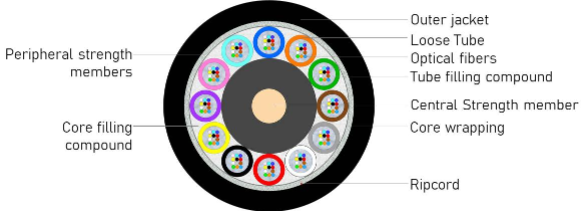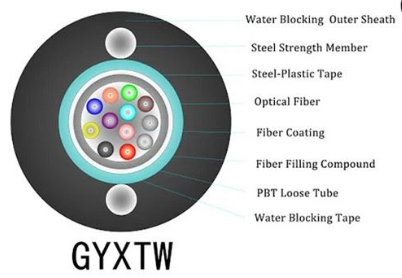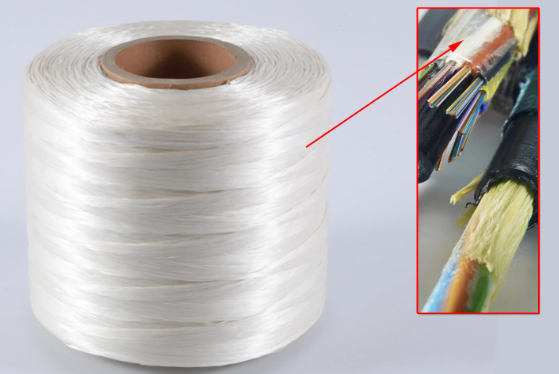Water-blocking materials are crucial components in fiber optic cables to prevent water ingress, which can degrade signal quality and lead to cable failure. Here are three main water-blocking materials commonly used in fiber optic cables.
How It Works?
One is that they are passive, that is, they directly block water at the point of damage to the sheath and prevent it from entering the optical cable. Such materials have hot melt adhesive and thermal expansion ointment.
Another type of water blocking is active. When the protective layer is damaged, the water blocking material absorbs water and expands. Thereby blocking the passage of water into the optical cable, causing the water to be restricted to a small range. There are water-swellable ointments, water-blocking yarns and water-blocking tapes.
3 Main Water-blocking Materials For Fiber Optic Cables:
Fiber Cable Filling Compound/Gel
As we all know, water is the most taboo for fiber optic cable. The reason is that water can cause the water peak of the optical fiber to attenuate, and it can cause the microcracks of the optical fiber to aggravate through electrochemical action and eventually cause the optical fiber to break.
Under humid conditions (especially the submarine fiber optic cable laid in the water depth of 12 meters or more), water will diffuse into the interior through the fiber cable sheath to form free water condensation. If it is not controlled, the water will migrate along the fiber cable core longitudinally into the junction box. It will bring potential danger to the communication system and even cause business interruption.
The basic function of the water-blocking fiber cable filling compound is not only to prevent the longitudinal water migration inside the optical cable, but also to provide the optical cable to relieve external pressure and vibration damping.
Filling compound in optical cables is currently the most common practice in the production of optical fibers and fiber cables. Because it not only plays a general waterproof and moisture-proof sealing function, but also acts as a buffer during the manufacture and use of the optical cable to prevent the optical fiber from being affected by mechanical stress. Stress loss improves its transmission stability and reliability.
From the development of optical cable filling compound, ointment can be roughly divided into the following three generations: the first generation is hydrophobic hot-filling ointment; the second generation is cold-filling ointment, while swelling water-blocking filling ointment is currently the most popular Filling materials for optical fiber cables. Among them, the water-swellable water-blocking filling paste is a kind of hydrophilic filling material, which is mainly filled by cold filling process.
Water-blocking Tape
Fiber cable water blocking tape is a dry water swellable material, which is widely used in the optical cable industry. The water-blocking tape functions of sealing, waterproofing, moisture-proofing, and buffering protection in optical cables have been recognized by people. Its varieties and performance have been continuously improved and perfected with the development of optical cables.
The water-blocking tape for optical cables can be divided into double-sided sandwich water blocking tape, single-sided coating water blocking tape and laminated water blocking tape. The traditional water-blocking tape is made by sticking super gouache between two layers of non-woven fabrics. It is characterized by an expansion height of 5mm, but the thickness of the water-blocking tape is also greater than 0.35mm. At the same time, this resin will lose dust during the production process, which will bring environmental problems.
Water-blocking Yarn
Water blocking yarn in fiber optic cable is mainly composed of two parts, one part is expanded fiber or expanded powder containing polyacrylate. When it absorbs water, these super absorbent will force its molecular chain to stretch out from the curled state, causing its volume to expand rapidly, thereby realizing the water blocking function. The other part is a reinforcing rib composed of nylon or polyester, which mainly provides the tensile strength and elongation of the yarn.
The water absorption capacity of the polymer water-absorbing resin is higher than that of the molecular expansion caused by the ion repulsion of the polymer electrolyte and the result of the interaction between the molecular expansion caused by the network structure and the hindering of the molecular expansion.
The water-absorbent resin is a high-molecular compound and therefore has the same characteristics. Water blocking function of the optical cable water blocking yarn is to use the water blocking yarn fiber body to quickly expand to form a large volume of jelly. Water absorption can reach dozens of times of its own volume, such as whitin the first minute of contacting water, the diameter can be rapidly expanded from about 0.5 mm to about 5 mm. And the water retention capacity of the gel is quite strong, which can effectively prevent the growth of water trees, thereby preventing the continuous penetration and diffusion of water, and achieve the purpose of water blocking. Water-blocking yarns are widely used in metal armored fiber optic cables.
These water-blocking materials are essential for ensuring the long-term reliability and performance of fiber optic cables, particularly in outdoor and underground installations where exposure to moisture is a common challenge.




